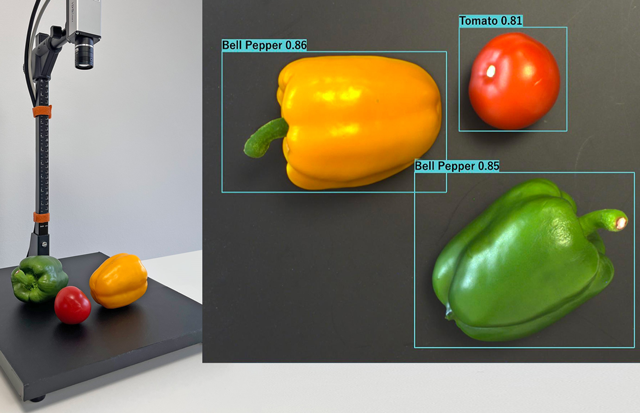Recognizing organic and multi-variant objects is no easy challenge in machine vision. However, the situation is different when using intelligent cameras such as those of the IDS NXT series.
How to Create Intelligent Machine Vision Applications
Article from | IDS Imaging Development Systems
In horticulture or agriculture, for example, they are the eyes of harvesting robots or rose cutters, can control seedlings or identify pests. In the food industry, they offer enormous facilitation for quality control and completeness checks.

Artificial intelligence therefore opens up completely new fields of application for camera technology and image processing. It allows image processing with strongly varying objects, such as classifying different types of fruit or identifying defective parts. Describing all the variances that occur with classic image processing would be extremely time-consuming and therefore costly. With artificial intelligence, however, such challenges can be overcome in no time at all. To learn more about what applications are available today, please visit https://en.ids-imaging.com/smart-farming.html.
But how is it possible to get started with the new technology? The all-in-one AI vision system IDS NXT ocean requires neither special knowledge in deep learning nor camera programming in order to create and execute individual neural networks. Camera hardware, software, infrastructure and support come from a single company. Users only need to provide sample images and knowledge on how to evaluate them (e.g. "good" / "bad"). This makes the start into AI-based image processing particularly quick, easy and user-friendly.
Anyone wishing to test the potential of AI for their applications should take a closer look at the IDS NXT ocean Creative Kit. It provides all components a user needs to create, train and run a neural network in his productive environment. In addition to an IDS NXT industrial camera with 1.6 MP Sony sensor, lens and cable, the package includes six months of access to the AI training software. The use of deep learning-based image processing for individual applications in agriculture can thus be realized in a short time.

The content & opinions in this article are the author’s and do not necessarily represent the views of AgriTechTomorrow
Comments (0)
This post does not have any comments. Be the first to leave a comment below.
Featured Product


